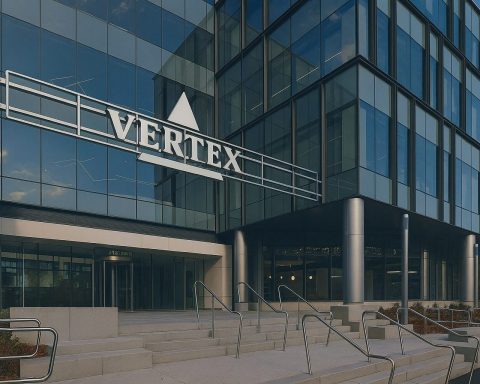Amazon stock heads into Monday’s session in a very different place from just a few weeks ago.
After hitting record highs on AI optimism and blockbuster Q3 results, Amazon.com Inc. (NASDAQ: AMZN) has now given back all of its 2025 gains. Shares are slightly down for the year, and the stock just logged a rough week as investors re‑price Big Tech’s massive AI spending binge. [1]
If you’re watching AMZN before the U.S. market opens on Monday, November 24, 2025, here’s a detailed look at where the stock stands, what has changed in the last few days, and the key storylines that could drive the next move.
1. Amazon stock right now: price, performance and valuation
As of Friday’s close (November 21, 2025):
- Last close: $220.69
- After-hours quote: $221.50
- Market cap: about $2.36 trillion
- Trailing EPS (TTM): $7.08
- P/E ratio: ~31.2
- Forward P/E: ~29.7
- 52‑week range: $161.38 – $258.60 [2]
The stock is trading roughly 13% below its early‑November peak (all‑time high close around $254 and 52‑week high of $258.60). [3]
According to MarketWatch and related feeds, Amazon’s entire 2025 year‑to‑date gain has been wiped out — shares that were up double digits earlier in the month are now slightly in the red for the year. [4]
On a shorter time frame, data from QuiverQuant shows AMZN fell about 6% over the last week, making it one of the more heavily watched tickers on retail‑investor platforms. [5]
Despite the pullback, Wall Street still treats Amazon as a growth stock:
- Analyst consensus rating: “Strong Buy” (47 analysts)
- Average 12‑month price target: $280.47, implying about 27% upside from Friday’s close [6]
That sets the stage: Amazon is no longer priced like a runaway winner, but it’s also far from a distressed story. The real debate is about how profitable its AI and cloud investments will be — and how long investors are willing to wait.
2. The Q3 2025 foundation: strong results, masked by big one‑off charges
Before thinking about tomorrow’s trading, it’s worth revisiting the numbers Amazon is actually working with.
In Q3 2025, Amazon reported: [7]
- Net sales: $180.2 billion
- +13% year‑over‑year
- North America up 11%, International up 14%, AWS up 20%
- Operating income: $17.4 billion
- Includes two major charges:
- $2.5 billion related to the FTC Prime settlement
- $1.8 billion in severance costs tied to layoffs
- Excluding those items, operating income would have been $21.7 billion
- Includes two major charges:
- Net income: $21.2 billion, or $1.95 per diluted share, up from $1.43 a year earlier
- Includes a $9.5 billion pre‑tax gain from Amazon’s stake in Anthropic
Amazon also guided for Q4 2025 net sales of $206–213 billion (10–13% growth) and operating income of $21–26 billion, broadly in line with last year’s holiday quarter. [8]
Key takeaway: underlying operations — especially AWS, advertising, and North America retail — are strong. But free cash flow is under pressure because Amazon is pouring money into data centers, chips, and AI infrastructure.
3. The AI cloud story: OpenAI deal, AWS re‑acceleration and new chips
The single biggest narrative for Amazon stock right now is simple:
Can Amazon’s huge AI and cloud investments through AWS turn into earnings fast enough to justify the spend?
AWS growth is picking up again
In Q3 2025, AWS sales grew 20% year‑on‑year to $33 billion, its fastest growth in roughly three years. [9]
Management highlighted:
- AWS operating income: $11.4 billion, up from $10.4 billion a year earlier
- AI‑related demand driving a 20.2% YoY growth rate for AWS, the best since 2022
- More than 3.8 gigawatts of power capacity added in the past 12 months, more than any other cloud provider, to support AI workloads [10]
Amazon also rolled out new AI infrastructure:
- Trainium2, its custom AI accelerator chip, is described as a fully subscribed, multi‑billion‑dollar business growing 150% quarter‑over‑quarter [11]
- Project Rainier, a massive AI compute cluster using nearly 500,000 Trainium2 chips, to support Anthropic’s Claude models [12]
- New EC2 P6e‑GB200/“Blackwell” UltraServers built on NVIDIA’s latest architecture for training and running the largest models [13]
All of this underscores why AI is at the heart of the Amazon investment thesis.
The $38 billion OpenAI–AWS partnership
Earlier this month, OpenAI and Amazon Web Services announced a massive multi‑year strategic partnership:
- Size: about $38 billion over seven years, according to AWS and Reuters, representing committed spend and capacity reservations by OpenAI on AWS infrastructure [14]
- What it covers:
- Access to hundreds of thousands of NVIDIA GPUs and the ability to scale to tens of millions of CPUs
- Dedicated infrastructure for running and training current and next‑generation models such as ChatGPT
- Strategic angle:
- Marks a major move by OpenAI to diversify away from Microsoft Azure as its sole cloud provider
- Positions AWS as a core compute supplier in the global AI race
The announcement helped send Amazon stock to fresh highs in early November as investors saw it as a validation of AWS’s AI capabilities. [15]
Data center build‑out in the U.S.
Amazon isn’t just signing big cloud contracts; it’s also building physical infrastructure at a rapid pace:
- Mississippi: Amazon will invest at least $3 billion in a new data center campus in Warren County, announced November 20. [16]
- North Carolina, Ohio, Indiana and Mississippi (combined): AP reporting suggests Amazon has committed around $10 billion per state to build or expand cloud and AI campuses, part of a broader multi‑billion‑dollar AI infrastructure push. [17]
Simply Wall St notes that the Mississippi project “fits squarely” into Amazon’s ongoing strategy of scaling AWS and AI, but also highlights rising concerns about capital intensity and margin compression in the cloud segment. [18]
4. The $15 billion bond deal and record AI capex
To fund all of this AI and cloud spending, Amazon has tapped the bond market in a big way.
First U.S. bond sale in three years — upsized to $15B
- Amazon recently returned to the U.S. investment‑grade bond market for the first time in about three years.
- Initial reports flagged a roughly $12 billion multi‑tranche offering, later upsized to $15 billion due to strong demand. [19]
- The deal included a 40‑year bond with a yield around 5.6%, roughly 1.15 percentage points above Treasuries — a sign that investors are demanding a noticeable premium to fund Big Tech’s AI build‑out. [20]
This move places Amazon firmly in what MarketWatch has called the “AI debt blitz”, where tech giants are issuing tens of billions in long‑dated bonds to finance data centers and AI hardware. [21]
Capex is soaring
Reports from the Financial Times and others estimate: [22]
- Q3 2025 capex rose about 61% year‑on‑year to $34.2 billion
- Total 2025 capital spending is on track to approach $125 billion, much of it tied to AI and cloud infrastructure
Free cash flow over the last twelve months fell to $14.8 billion, down from $47.7 billion the prior year, primarily because of this capex ramp. [23]
From a stock perspective, that sets up a straightforward tension for Monday’s trade and beyond:
- Bull case: Amazon is locking in an AI and cloud lead that could support higher margins and growth beyond 2026.
- Bear case: AI may require far more capital than cloud “1.0” did, with lower returns than the market has been assuming.
5. Regulatory overhang: the $2.5B FTC Prime settlement and global scrutiny
One reason Amazon’s Q3 operating income looked lower than it otherwise would have: a $2.5 billion legal charge tied to its Prime membership practices. [24]
Prime “dark patterns” settlement
In September, Amazon agreed to a historic $2.5 billion settlement with the U.S. Federal Trade Commission over allegations it deceptively enrolled customers in Prime and made cancellation too difficult. Key points: [25]
- $1.0 billion in civil penalties — the FTC’s largest rule‑violation fine on record
- $1.5 billion in customer refunds
- Automatic refunds (up to about $51 in some cases) for eligible customers who signed up through certain checkout flows between 2019 and 2025
- A separate claims process for tens of millions more affected users starting in 2026
- Amazon did not admit wrongdoing but agreed to maintain clearer sign‑up and cancellation flows for Prime
For investors, the direct financial hit is now mostly known and reflected in Q3 numbers. The bigger question is whether this settlement foreshadows more aggressive regulatory actions, particularly around Amazon’s marketplace and advertising businesses.
Antitrust and platform rules
The Prime case is separate from a broader FTC antitrust lawsuit accusing Amazon of abusing monopoly power in its marketplace — a case that could head toward trial in 2027. [26]
Internationally, regulators are also tightening the screws. Last week, for example, Australia’s internet watchdog added Amazon‑owned Twitch to its upcoming teen social‑media ban, forcing the streaming platform to block accounts for users 16 and under, under threat of hefty fines. [27]
None of these issues are likely to move the stock dramatically on Monday alone, but they form part of the risk backdrop that investors have to price into valuation multiples.
6. Amazon’s largest layoffs since 2023: engineers hit hardest
While Amazon is spending aggressively on AI hardware and data centers, it’s cutting aggressively in other areas.
14,000 corporate jobs cut — with more potentially coming
In October, Amazon announced plans to eliminate around 14,000 corporate roles, roughly 4% of its corporate workforce, in its largest round of cuts since 2023. [28]
Reuters reporting suggests the company is targeting as many as 30,000 corporate job cuts as part of a wider push to flatten management layers and boost efficiency. [29]
Engineers bore the brunt
Recent state “WARN” filings show: [30]
- About 4,700 jobs were cut across California, Washington, New York and New Jersey
- Nearly 40% of those roles were engineers, meaning more than 1,800 engineering positions were eliminated
CNBC and others describe this as one of Amazon’s most engineering‑heavy layoff waves ever, affecting teams across AWS, devices, gaming, advertising and retail tech. [31]
From an investor’s point of view:
- Positive angle: fewer high‑paid corporate roles can help offset the hit from multi‑billion‑dollar AI and logistics investment, supporting margins.
- Risk angle: cutting deeply into engineering while simultaneously pushing hard into AI could slow innovation, damage morale, or make it harder to execute on ambitious AI roadmaps.
This tension — cost discipline vs. innovation capacity — is another theme traders will be weighing as headlines about the layoffs continue to circulate Monday.
7. Wall Street is split between “AI bargain” and “no longer a bull case”
Even after the recent slide, Amazon is still one of the most widely recommended large‑cap tech stocks — but the unanimity has started to crack.
The bullish camp: AWS‑driven upside
A few notable bullish calls:
- Evercore ISI recently raised its Amazon price target from $280 to $335, citing Q3 results that showed record operating margins (~12%) and the strongest AWS growth in 11 quarters. They see Amazon as a “high‑quality compounder” with ample runway in cloud, retail and ads. [32]
- Morgan Stanley keeps Amazon as a top pick, with an overweight rating and a $315 price target — implying more than 40% upside from current levels. The firm argues that if AWS growth can accelerate toward 25% in 2026, AMZN’s earnings multiple could expand, especially since they see the stock trading at a discount on a PEG basis versus peers. [33]
- Zacks Research recently raised its FY2025 EPS estimate to $7.11 (from $6.69) and continues to rate the stock a Strong Buy, with broader broker targets clustering around $295. [34]
In short, a big part of the Street still sees AMZN as an AI‑leveraged compounder whose current valuation (low‑30s P/E) is reasonable given its growth and increasingly diversified profit engines.
The cautious camp: AI economics may not justify the spend
On the other side, Rothschild & Co Redburn has attracted attention by downgrading both Amazon and Microsoft from “Buy” to “Neutral.” [35]
Their argument, echoed in coverage from Investopedia and Business Insider:
- Generative AI infrastructure is far more capital‑intensive than classic cloud computing — they estimate roughly three times higher capital intensity.
- Revenue per unit of GPU capacity may be materially lower than in the cloud 1.0 era.
- If GPUs need to be refreshed every few years, the economics could become “value destructive” unless pricing power increases significantly. [36]
In their view, the market is still pricing AMZN as if cloud‑era returns will continue, even though the economics of AI might be structurally different. The firm still expects Amazon to grow, but “no longer sees a credible path back to cloud 1.0 economics” without visible improvements in growth and lower capex intensity.
That kind of skepticism is one reason AI‑heavy tech names — Amazon included — just endured a rough week, even after solid earnings. [37]
8. Key storylines to watch before the opening bell on November 24, 2025
With that backdrop, here are the main things traders and longer‑term investors are likely watching as U.S. markets reopen on Monday:
1. Can Amazon stock stabilize around the $220 area?
- The $220–225 zone now sits well below the stock’s early November highs but above the mid‑year range near $200.
- After a ~13% slide from peak and a 6% weekly drop, some investors will be watching for signs of support and dip‑buying interest versus continued de‑risking out of AI‑heavy tech. [38]
Any strong move through this band — up or down — could attract momentum traders.
2. Reaction to AI capex and the $15B bond deal
Expect continued commentary on:
- Whether the $15B bond sale was “well‑timed opportunistic funding” or a sign Amazon is stretching its balance sheet to keep pace in AI. [39]
- How credit markets digest the growing wave of AI‑linked tech debt — not just from Amazon, but from peers like Meta, Alphabet and Oracle as well. [40]
If bond spreads continue to widen for AI‑heavy names, equity investors may demand a higher risk premium.
3. Ongoing coverage of layoffs and engineering cuts
News cycles around:
- 14,000 corporate job cuts,
- engineering roles making up ~40% of reductions in key states, and
- potential further cuts toward 30,000 corporate roles [41]
…could influence sentiment about Amazon’s ability to both cut costs and deliver on ambitious AI plans.
4. Holiday‑season setup and early Black Friday reads
Amazon has:
- Launched early Black Friday Week promotions across categories from fashion to kitchenware [42]
- Announced plans to hire 250,000 seasonal workers in the U.S. and hundreds of thousands more globally for the 2025 holiday season [43]
Investors will be parsing any data points on:
- Traffic and conversion trends
- Promotional intensity (and thus margin risk)
- How U.S. consumers are spending into year‑end given macro uncertainty
While Monday may not bring concrete sales numbers, any analyst notes or third‑party tracking data that hint at a strong or weak holiday start can move the stock.
5. Shifting AI sentiment across Big Tech
The broader backdrop matters:
- The Nasdaq 100 is down around 6% from its late‑October high, largely on worries about AI valuations and capital intensity. [44]
- A growing chorus of analysts and commentators is warning about an “AI bubble” risk, even as others argue that strong demand will bail out returns over time. [45]
Because Amazon is at the center of that debate, it tends to move in sympathy with the wider AI trade.
9. Bottom line: how Amazon looks heading into Monday’s open
Heading into the November 24, 2025 session, the Amazon stock story can be summarized as:
- Fundamentals:
- Q3 showed solid double‑digit revenue growth, re‑accelerating AWS, strong advertising and retail performance, and robust profitability despite massive AI investments and one‑time charges. [46]
- Capital allocation:
- Amazon is spending more on AI and data centers than ever before, financing part of that with a $15B bond deal and accepting near‑term free‑cash‑flow pressure. [47]
- Regulatory & workforce risk:
- The $2.5B FTC Prime settlement, Twitch’s inclusion in Australia’s teen social‑media ban, and the largest layoffs since 2023 underscore that Amazon is actively restructuring its business under growing regulatory and political scrutiny. [48]
- Valuation & sentiment:
- The stock now trades back below its 2025 starting level, with a low‑30s P/E, a Strong Buy consensus, and average targets 20–40% above the current price — but at least one formerly bullish shop now says it “no longer sees a bull case” for AI giants at current economics. [49]
For short‑term traders, Monday will be about whether support emerges near the $220 level or whether concerns about AI capex, bond issuance and layoffs keep pressure on AMZN.
For longer‑term investors, Amazon remains a high‑growth, high‑capex AI infrastructure play with strong underlying businesses but rising questions about the long‑run profitability of generative AI.
Either way, the next leg for Amazon stock will likely be shaped less by last quarter’s numbers and more by how convincingly the company can show that today’s massive AI investments will translate into durable earnings growth — without over‑leveraging the balance sheet or eroding margins.
And as always: this article is informational only and not investment advice. Anyone considering AMZN should evaluate their own risk tolerance, time horizon and portfolio needs, and, if needed, consult a qualified financial professional.
References
1. www.marketwatch.com, 2. stockanalysis.com, 3. www.macrotrends.net, 4. www.marketwatch.com, 5. www.quiverquant.com, 6. stockanalysis.com, 7. ir.aboutamazon.com, 8. ir.aboutamazon.com, 9. ir.aboutamazon.com, 10. ir.aboutamazon.com, 11. ir.aboutamazon.com, 12. ir.aboutamazon.com, 13. aws.amazon.com, 14. www.aboutamazon.com, 15. www.reuters.com, 16. www.reuters.com, 17. apnews.com, 18. simplywall.st, 19. www.reuters.com, 20. www.ft.com, 21. www.marketwatch.com, 22. www.ft.com, 23. ir.aboutamazon.com, 24. ir.aboutamazon.com, 25. www.washingtonpost.com, 26. www.ft.com, 27. www.reuters.com, 28. apnews.com, 29. www.reuters.com, 30. m.economictimes.com, 31. stockanalysis.com, 32. www.investing.com, 33. www.marketwatch.com, 34. www.marketbeat.com, 35. www.investopedia.com, 36. www.investopedia.com, 37. www.investopedia.com, 38. www.macrotrends.net, 39. www.ft.com, 40. www.marketwatch.com, 41. apnews.com, 42. nypost.com, 43. apnews.com, 44. www.investopedia.com, 45. www.investopedia.com, 46. ir.aboutamazon.com, 47. www.ft.com, 48. apnews.com, 49. stockanalysis.com







